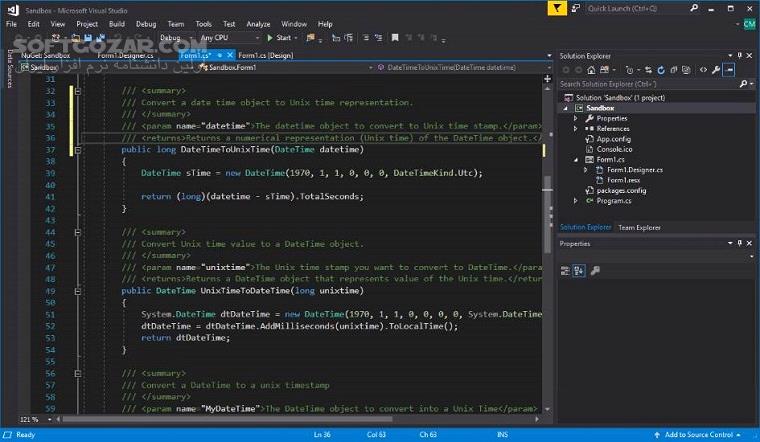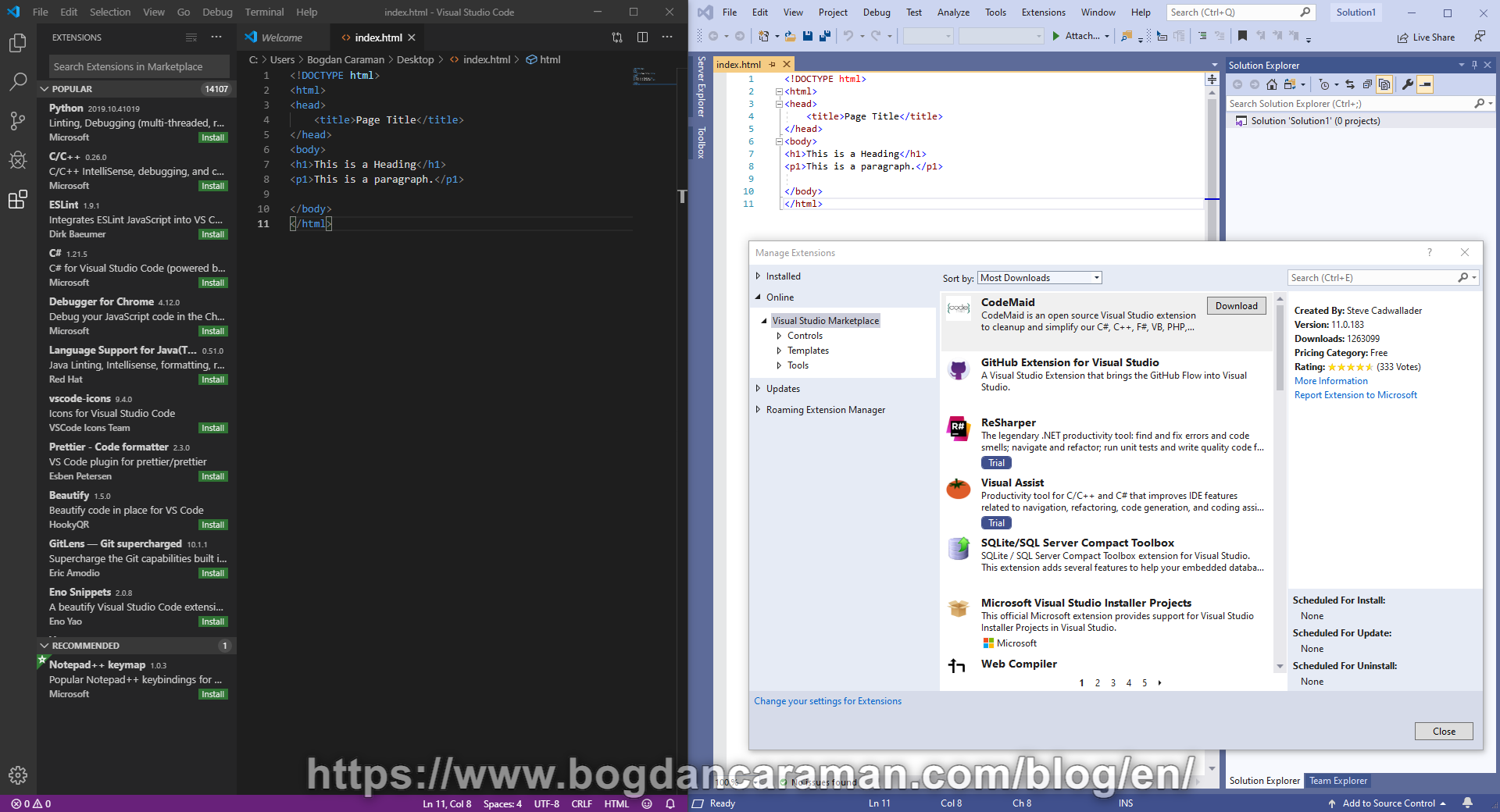- Visual Studio 2019 And Visual Studio Code
- Visual Studio 2019 Code
- Visual Studio 32 Bit Download
- Visual Studio 2019 Codes
Visual Studio IDE Visual Studio for Mac Visual Studio Code. To continue downloading, click here. Visual Studio Community 2019 – Free IDE and Developer Tools 2020-12-14T11:03:28-08:00. Visual Studio Community. A fully-featured, extensible, free IDE for creating modern applications for Android, iOS, Windows, as well as web applications.
- Visual Studio IDE Visual Studio for Mac Visual Studio Code To continue downloading, click here Visual Studio Live Share Visual Studio 2020-12-30T07:30:11-08:00.
- Download Visual Studio Community, Professional, and Enterprise. Try Visual Studio IDE, Code or Mac for free today.
Having a high code coverage percentage boosts your confidence in your code: the more thoroughly your code is tested, the lesser are the possibilities to have bugs. Of course, You'll never have a bug-free project, that's utopian. But you can work toward reducing the possible bugs by testing each and every part of your code.
The term code coverage represents the percentage of code covered by tests: it is calculated basing on two values: line coverage, which is about the exact count of lines covered, and branch coverage which is about the branches (if-else, switch, try-catch) that have been executed by our test suite.
In this article, we're gonna see how to calculate code coverage on .NET projects and how to visualize a Code Coverage report on Visual Studio 2019.
Setting up a simple project
Let's create a class library with a single class with only one method:
Then, we have to create a test class and write some tests for the MyArray class:
The code and the tests are pretty straightforward; but have we really covered the Replace method with enough tests to be sure not to have missed something?
Coverlet - the NuGet Package for code coverage
The first thing to do to add code coverage reports to our project is to install Coverlet, a NuGet package, whose documentation can be accessed on GitHub.
You must add Coverlet.msbuildto every test project in your solution. So, add it with the NuGet package manager or with the CLI, running the command dotnet add package coverlet.msbuild.
This package relies on the MSBuild tool to collect code coverage data and statistics, and save them into a specific file that can be opened with other tools or applications.
Installing code coverage collector on Visual Studio 2019

The next step is to install in Visual Studio an extension that, given the code coverage report, displays the result in a human-readable format.
The tool we're gonna use is ReportGenerator, that provides support for projects based on .NET Core.
To install it, open the PowerShell with admin privileges and run the following commands:
These commands install ReportGenerator alongside global .NET tools.
And now, it's time to install the actual Visual Studio extension.
The first step is to head to the Extensions menu and select Manage Extensions.Then, search Run Coverlet Report and install it - you have to close all Visual Studio instances to install it.

Since we are integrating Coverlet with MSBuild, you have to head to Tools > Options and change the Integration Type from Collector to MSBuild. Irfanview for mac os x.
Once everything is installed (remember to install Coverlet in all and only test projects) there's only one thing to do: try them!
Visual Studio 2019 And Visual Studio Code
Our first run
First of all, run all of you tests for the first time: this helps to initialize correctly all the references to the test projects. You must do this step only the first time.
Now, under the Tools menu, click on Run Code Coverage: this command runs the tests, generates a report files and uses it to generate a full report like this:

Here we go! We have our code coverage report!
Visual Studio 2019 Code
You can even drill down into details for each class to find out other the values for Branch Coverage, Line Coverage and Cyclomatic complexity.

For each class, you can see the details of the lines covered by tests. But if you are like me, you don't want to open each file to see what to do, but you'd like a way to see it directly in your IDE.
Well, just click on Toggle Code Coverage Highlighting under the Tools menu: you will see all the lines covered by tests in green, and all the ones that aren't covered by any tests in red.
This will help you speed up your development and find out possible bugs and flaws earlier.
Wrapping up
Visual Studio 32 Bit Download
We've seen how easy it is to run code coverage on .NET Core projects.

The installation of the global tool and the extension needs to be done only the very first time. So the only thing to do when you want to see the code coverage report for your projects is to install coverlet.msbuild. Quite easy, uh?
Visual Studio 2019 Codes
Happy coding!
